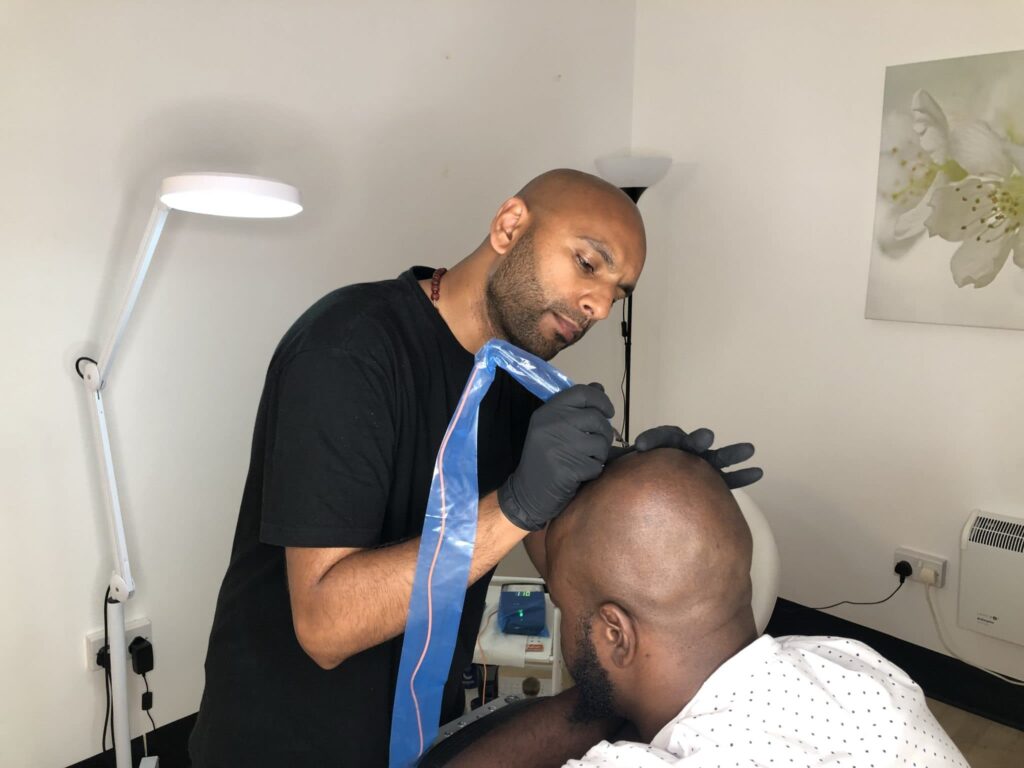Hair loss is a real struggle as we grow older. And no, it is not just a man thing. Although male-pattern baldness is the most common cause of hair loss, there are other reasons for hair loss. Yes, even in females.
If you find yourself constantly worrying about losing your hair, chances are you have considered some solutions. Perhaps, like many people out there, you have tried special diets and beauty products that promise fuller hair. Truth is, while these are effective to some extent, it won’t take long before you seek out long-lasting solutions. That’s where hair transplants and their alternatives come in. In this article, we highlight the top 7 Non-Surgical Hair Transplant Alternatives. But first, let’s see why people avoid hair transplants.
Disadvantages of Hair Transplant
Hair transplants are used by many people including celebrities. While we can all agree that it is the celebrity option for hair loss, we can also tell you for free that it is not fail-proof. Certain factors such as how your body reacts to the procedure and the professional who performs the transplant will affect the result you get.
Worse, despite the fortune you spend on it, there is no assurance that you won’t lose the hair eventually. Even more disturbing, hair transplant procedures require surgery, and like other surgeries, complications could arise along the way.
Considering these disadvantages, people are now interested in non-invasive alternatives. Let’s jump right in!
Recommended Hair Transplant Alternatives
Scalp Micropigmentation (SMP)
SMP seats at the top of our list of recommended hair transplant alternatives – for good reasons. First things first, SMP is completely non-invasive. You don’t have to worry about surgery and its related complications. Additionally, SMP is meticulously and expertly administered to create a fool-proof illusion of thicker and fuller hair.
The technique follows your natural hair follicles such that it appears as though your hair was originally that way. It also uses the same colour as your natural hair so no one’s got to know. This technique is perfect for those with receding hairlines as well as those with complete hair loss.
Rogaine
If you are looking for a topical solution for hair growth, you should totally consider Rogaine. Serving as a medical cream for hair regeneration, Rogaine is believed to stimulate hair growth in both men and women alike. You may have to meet your GP for a prescription but we think you can also get it over the counter.
Either way, be sure to adhere to the concentration level and other recommendations. Like most medications, Rogaine has its share of side effects. You should educate yourself about these side effects before you get the cream.
Low-Light Laser Therapy (LLLT)
This hair growth technique is perfect if you are looking for a flexible (and not so expensive) regime for your hair. First, let’s quickly state that this technique may not be as effective as other hair transplant alternatives. However, significant success has been recorded over the years. LLLT uses lasers [at a safe level] to stimulate the hair follicle. Many people report good results after a few weeks.
The science relies on energy from the laser which activates the hair growth process via your hair follicles. You will most likely repeat the process multiple times to get the desired result. Additionally, keep in mind that LLLT requires healthy follicles to work perfectly.
Platelet-Rich Plasma (PRP)
Another effective alternative relies on injecting a cocktail of platelet-rich plasma into your scalp. Once in your scalp, it is believed to stimulate your hair follicle, helping it grow longer and stronger hair.
It’s important to note that you have to repeat this process from time to time for the rest of your life.
Steroid Injection
Among the many causes of hair loss is autoimmune diseases. In cases where your immune system is responsible for inhibiting hair growth, the best treatment option should be steroid injection.
This hair growth therapy acts on your immune system. It locates the exact immune response attacking your hair follicle and shuts it off. Once switched off, you should start seeing results in a few weeks.
Finasteride
Finasteride (also called Propecia) is unarguably one of the best clinical hair transplant alternatives. This hair loss remedy works by inhibiting the hormone responsible for hair loss, especially in men. The prescription-only pill is known to inhibit dihydrotestosterone, which is the hormone that causes male-pattern baldness in men as they grow older.
The testosterone derivative hormone is typically present in the genes of some men. It attacks your hair follicle, causing you to produce shorter and thinner hair. This spreads gradually, leading to baldness. With Finasteride pills, the dihydrotestosterone process is greatly disrupted, thus ensuring your hair follicles continue to produce strong long hair as usual.
Hair Loss Supplements
Do you know hair loss can be a result of some nutrient deficiency? In such cases, your best remediation should be supplements. You can get these supplements from foods, beauty products, and some topical medications.
While effective, these supplements will be futile if you are combating male-pattern baldness or other causes of baldness in men and women. Therefore, we advise you to get the right diagnosis before trying supplements.
Why hide in shame when you can totally reverse your baldness in many non-invasive ways. Having listed these 7 options, we encourage you to take the time to fully consider what you want and which option offers the best solution.
For a fully non-invasive long-lasting solution, you will agree that scalp micropigmentation stands out amongst other hair transplant alternatives. Don’t hesitate to contact us for more inquiries about SMP procedure.

